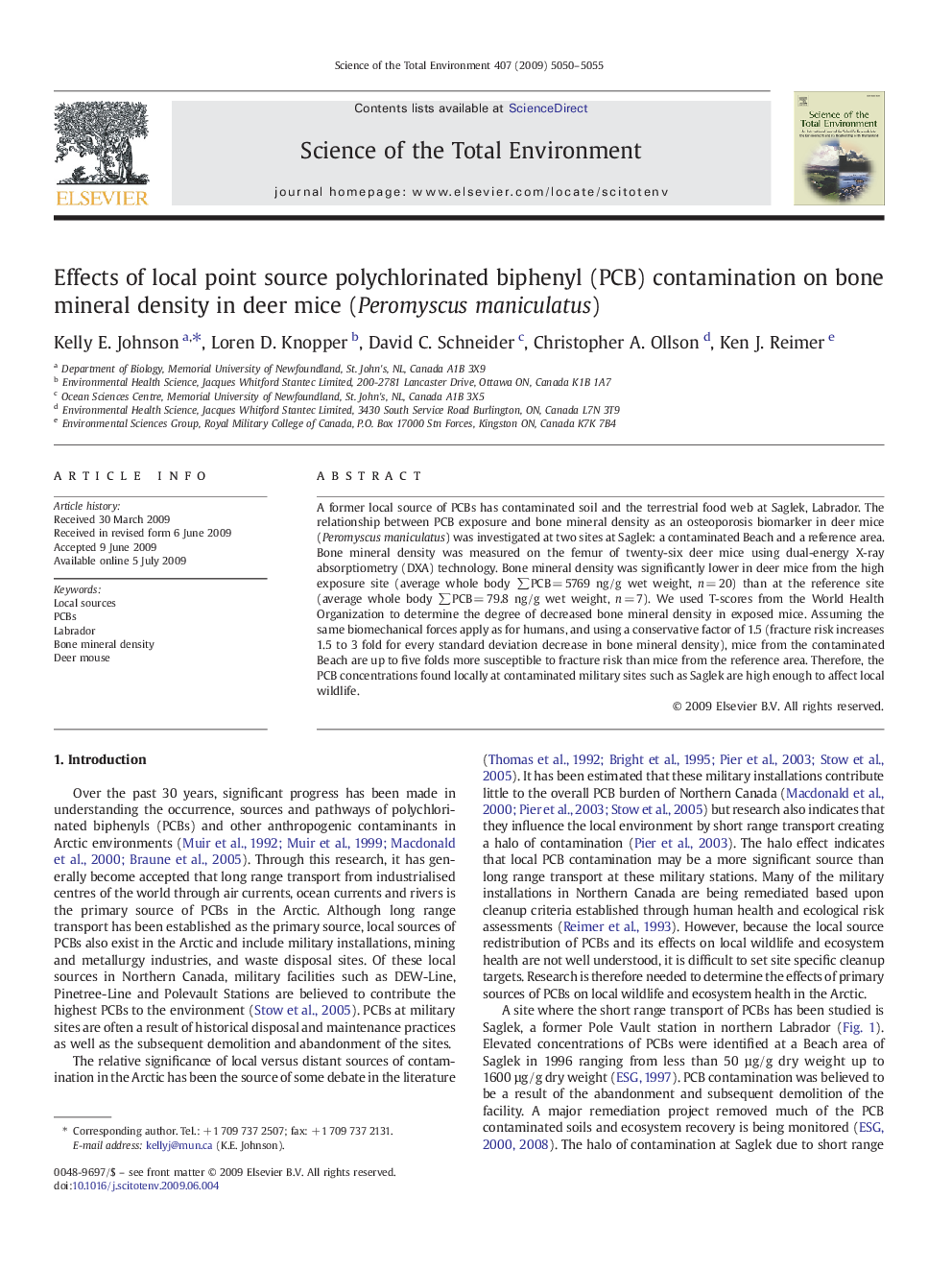| Article ID | Journal | Published Year | Pages | File Type |
|---|---|---|---|---|
| 4431584 | Science of The Total Environment | 2009 | 6 Pages |
A former local source of PCBs has contaminated soil and the terrestrial food web at Saglek, Labrador. The relationship between PCB exposure and bone mineral density as an osteoporosis biomarker in deer mice (Peromyscus maniculatus) was investigated at two sites at Saglek: a contaminated Beach and a reference area. Bone mineral density was measured on the femur of twenty-six deer mice using dual-energy X-ray absorptiometry (DXA) technology. Bone mineral density was significantly lower in deer mice from the high exposure site (average whole body ∑PCB = 5769 ng/g wet weight, n = 20) than at the reference site (average whole body ∑PCB = 79.8 ng/g wet weight, n = 7). We used T-scores from the World Health Organization to determine the degree of decreased bone mineral density in exposed mice. Assuming the same biomechanical forces apply as for humans, and using a conservative factor of 1.5 (fracture risk increases 1.5 to 3 fold for every standard deviation decrease in bone mineral density), mice from the contaminated Beach are up to five folds more susceptible to fracture risk than mice from the reference area. Therefore, the PCB concentrations found locally at contaminated military sites such as Saglek are high enough to affect local wildlife.
